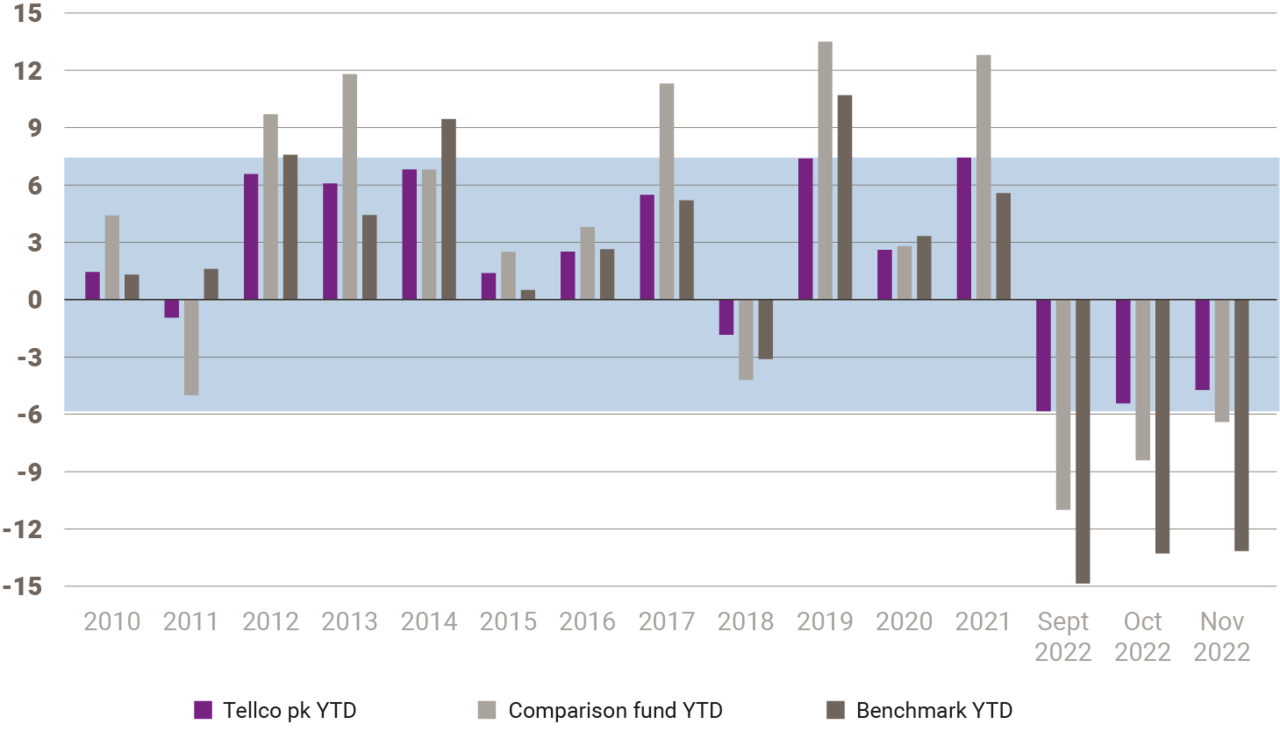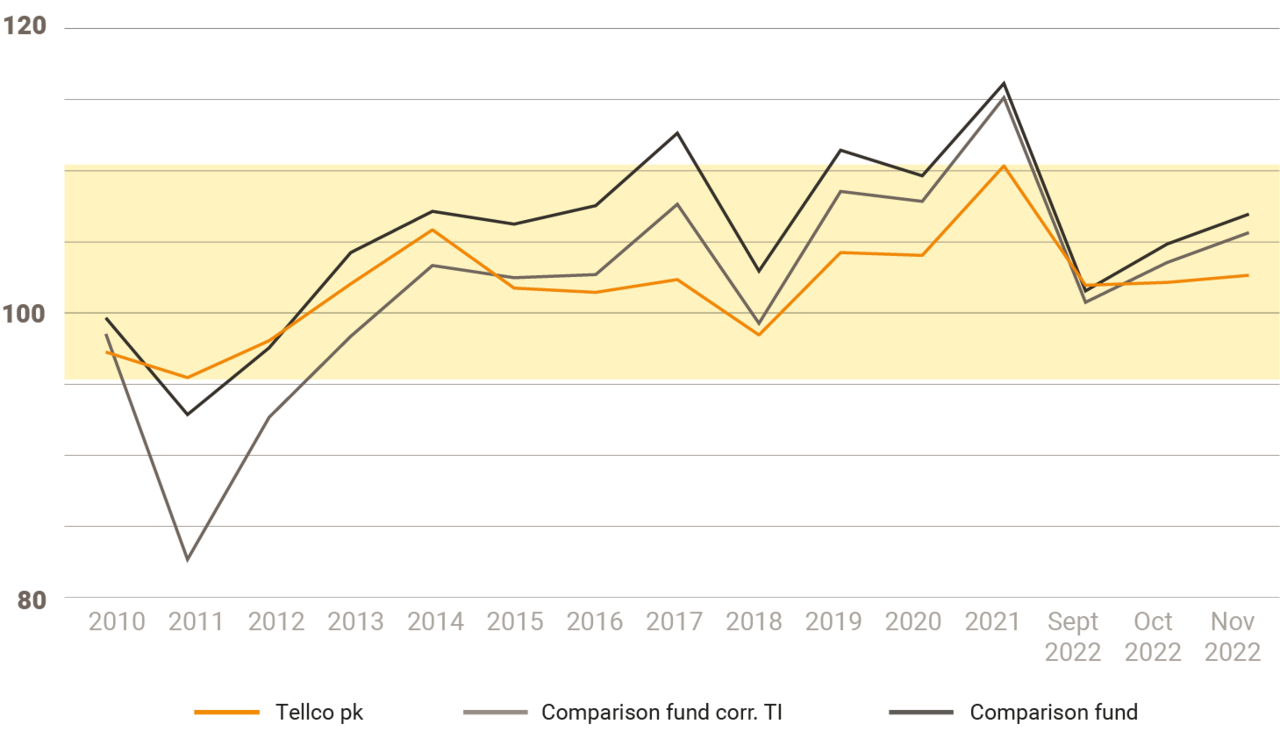Given the continuing limitation on potential returns for pension funds and the increase in life expectancy, the Board of Trustees of Tellco pkPRO has decided to reduce the conversion rate by 0.1 percentage points in both of the next two years. For this reason, as of 1 January 2022, the universal conversion rate of 5.9% will apply, and the rate of 5.8% will apply as of 1 January 2023. In any case, Tellco pkPRO guarantees that the pension benefits will amount to at least 6.8% of the mandatory retirement savings in accordance with Article 15 of the Occupational Pensions Act (OPA).
The conversion rate determines the amount of pension benefits that are paid out per Swiss franc of credit. This rate is technically a mathematical factor. To calculate the conversion rate, you only need the applicable technical interest rate (discount rate) along with a few statistically determined probabilities in terms of life expectancy, marital status, etc.
Somewhat simply put, you could say that the calculation is used to determine how long, on average, someone will draw retirement benefits in order to then use the discount rate (technical interest rate) to calculate how much of that can be paid out from the capital so that, at the end, together with the interest rate, there is not too much or too little money available.
However, the conversion rate for the mandatory component of the retirement savings is not determined on the basis of mathematical calculations, but rather is primarily based on political considerations. This “mandatory” conversion rate was last changed in 2005 when the Swiss Parliament reduced it from 7.2% to 6.8%.
The returns that can be achieved by pension funds with low-risk investments have dropped since then, and life expectancy has continuously increased. There are three ways to compensate for these changes:
- Reducing the pension level (conversion rate)
- Reducing the pension term
- Increasing the starting capital
The pension level is determined legally and therefore cannot be changed. The pension term is also defined by the legally determined starting age and the statistically predicted end. This means that pension funds only have the possibility to provide more capital than the policyholders have saved. They can only do this if part of the yield from the capital of the active insured persons is used to finance the retirement pensions of the pensioners. However, this contradicts the underlying idea of occupational pension schemes, which are built around the concept of funding these benefits in advance. This means that each and every individual saves for their own retirement, unlike old-age and survivors’ insurance, where the working population pays for the pensions of those currently drawing it (pay-as-you-go system).
If the conversion rate is too high, the system of funding in advance slowly turns into a pay-as-you-go system.
In order to somewhat absorb the misalignment of the system and to buy some time until the necessary pension system reforms are implemented, many pension funds have made changes. Among other things, this includes applying a lower conversion rate for the entire retirement savings (universal model) or just for the non-mandatory component (splitting). For Tellco pkPRO, the Board of Trustees currently sees no other solution than to moderately reduce the conversion rate from 6.0% to 5.8% in two steps of 0.1 percentage points each.





